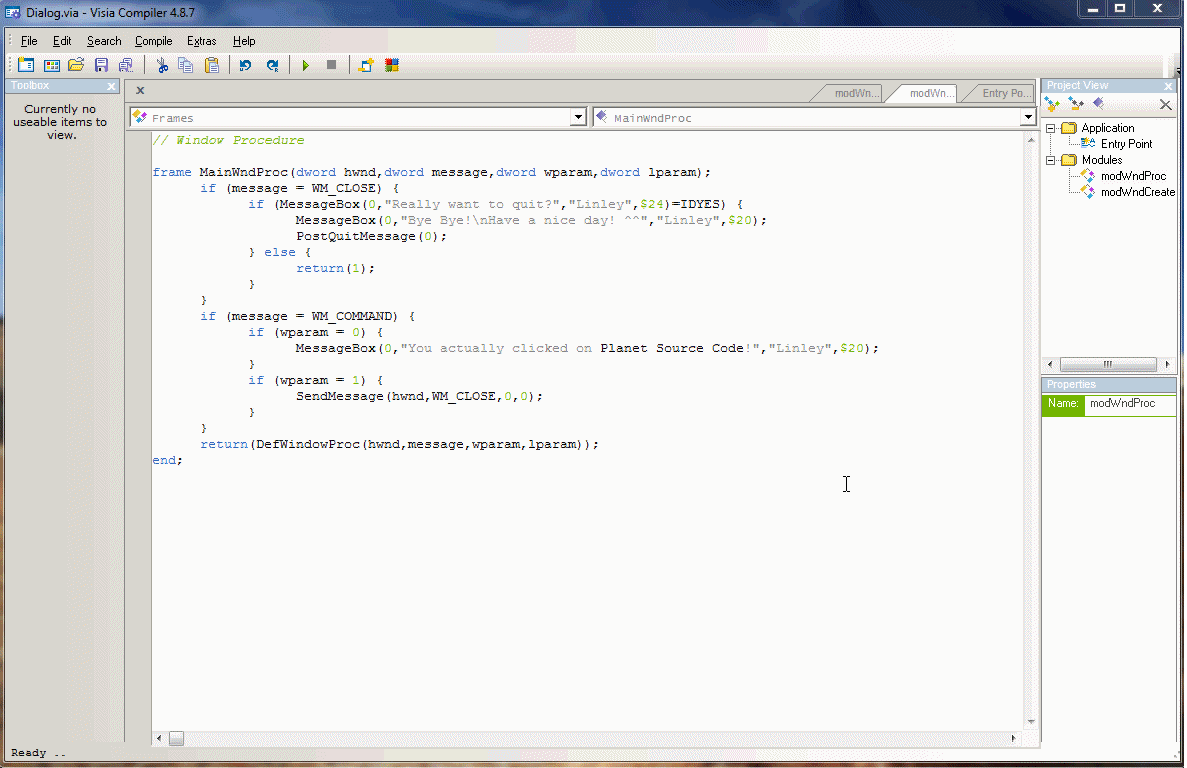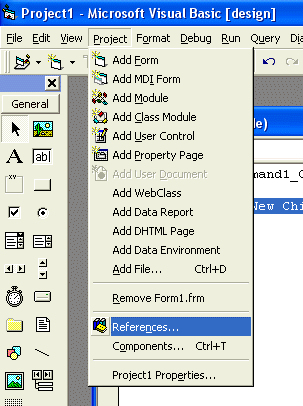

- #EXAMPLE CODE VISUAL BASIC UPDATE#
- #EXAMPLE CODE VISUAL BASIC PASSWORD#
- #EXAMPLE CODE VISUAL BASIC WINDOWS#
The next thing we need to do, therefore, is to display the data in an appropriate format. The only problem is that the data itself cannot be seen by the user. This code fills the dataset ds with data from the Contact table in the database.


The application now has a data adapter, a dataset and an SQL command Your code window should now look like the illustration below.
#EXAMPLE CODE VISUAL BASIC PASSWORD#
If the database were password protected, it would also need to include a valid username and password. We define the connection string by setting the ConnectionString property of the connection object, which specifies both the technology to be used to connect to the database (the database provider), and the location of the database file (the data source).
#EXAMPLE CODE VISUAL BASIC UPDATE#
If this is not the case, attempting to add or update records may cause problems, because you will need write permission for the target directory. Note also that the databse itself needs to be in a trusted location on your computer, or on whatever computer it resides on. The connection string must also specify the precise path to the database, which is something you should bear in mind if you create database applications for distribution. The variable con now holds a reference to the connection object.Īs mentioned above, we identify the version of ACE to be used using a connection string. Double click on the button to open up the code editor window, and insert the following line of code:.Add a button to the application's main form and name it btnLoad.To simplify your code, copy the Contacts.accdb database into the \bin\Debug subdirectory of your project folder.Save your project immediately to create the project folder.
#EXAMPLE CODE VISUAL BASIC WINDOWS#
Using the Windows Forms App (.Net Framework) template as we did for the "AddressBook" project, create a new project called "AddressBook02".Since the database we are using was created with Access 2016, we will be using ACE 12.0. The current stable version of ACE at the time of writing is ACE 16, although according to numerous sources (and in our experience) ACE 12.0 works for databases created with multiple versions of Access up to at least Access 2019. From this point forward, we will simply refer to it as ACE. The first version of this database, developed in 1992, was called JET, which stands for Joint Engine Technology, and was commonly referred to as the Microsoft JET Engine. The connection object is created using Microsoft’s Access Database Engine, also known as Office Access Connectivity Engine (ACE). For an Access database, this will be an OLE DB ( Object Linking and Embedding Database) connection object. The type of connection object used depends on the type of database involved. The first thing we need to do is to create a connection object to enable us to connect to the database. Using the same database ( Contacts.accdb) as for the page "An Address Book Database", we will create a database application using Visual Basic program code rather than wizards.


 0 kommentar(er)
0 kommentar(er)
